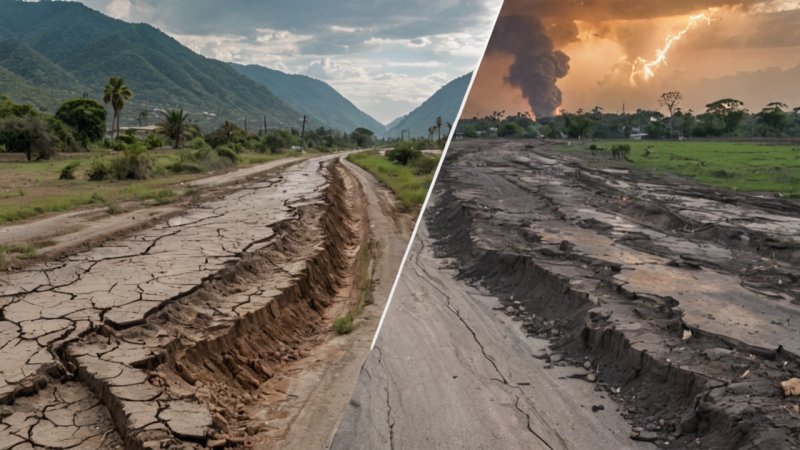Climate change is not merely an environmental issue; its repercussions extend deeply into the realm of mental health. As natural disasters increase in frequency and severity, the psychological effects on individuals and communities become more pronounced. This article compares two major aspects of this intersection: the direct impacts on mental health caused by climate-related events and the indirect effects stemming from long-term environmental changes. Understanding these differences is crucial for developing effective strategies to support mental health in the face of climate change.
Direct Impacts of Climate-Related Events
One of the most immediate ways that climate change affects mental health is through natural disasters such as hurricanes, floods, and wildfires. These events can have devastating effects on communities, leading to trauma, loss, and stress.
Pros
- Increased Awareness: The visibility of climate-related disasters often raises awareness about mental health issues, prompting more discussions and initiatives aimed at support.
- Immediate Support Services: Following disasters, there is often a mobilization of resources, including emergency mental health services and community support systems.
Cons
- Trauma and PTSD: Individuals exposed to disasters may experience long-term psychological effects, including post-traumatic stress disorder (PTSD), anxiety, and depression.
- Displacement: Many people are forced to leave their homes, leading to feelings of loss, instability, and social isolation, which can exacerbate mental health issues.
Indirect Effects of Long-Term Environmental Changes
In addition to the immediate impacts of natural disasters, climate change also brings about long-term environmental changes that can subtly affect mental health. These include rising temperatures, changing weather patterns, and loss of biodiversity.
Pros
- Community Resilience Building: Awareness of long-term environmental changes can lead communities to come together to develop sustainable practices, fostering social connections and support networks.
- Advocacy for Mental Health Integration: The recognition of the link between climate change and mental health can drive advocacy for integrating mental health into environmental policy discussions.
Cons
- Chronic Stress: Continuous exposure to environmental degradation can lead to chronic stress and anxiety over the future, impacting overall mental well-being.
- Loss of Nature: As natural habitats diminish, individuals may experience a disconnection from nature, which is known to have therapeutic benefits for mental health.
Comparative Analysis of Immediate vs. Long-Term Effects
The comparison between the direct impacts of climate-related events and the indirect effects of long-term environmental changes reveals significant differences in their nature and implications.
Nature of Impact
The direct impacts are often acute and traumatic, stemming from specific events that lead to immediate psychological distress. In contrast, the indirect effects are chronic, stemming from a gradual decline in environmental quality that leads to ongoing anxiety and stress.
Community Response
After a natural disaster, communities often unite quickly, providing immediate support and resources. However, long-term environmental changes can lead to slower, less visible responses, which may not mobilize communities in the same way.
Support Systems
Emergency mental health services are typically available following disasters, but long-term mental health support in response to ongoing environmental changes may be less prioritized, leading to gaps in care.
Strategies for Mitigation and Support
To address the mental health impacts of both direct and indirect effects of climate change, a multi-faceted approach is necessary. This includes:
- Raising Awareness: Educating communities about the mental health impacts of climate change can help foster understanding and empathy.
- Integrating Mental Health in Climate Policy: Advocating for mental health considerations in climate change legislation can ensure that psychological support is part of disaster preparedness and response.
- Community Building: Encouraging community engagement in sustainability practices can enhance social cohesion, providing emotional support and resilience.
- Accessible Mental Health Services: Ensuring that mental health resources are available and accessible in the wake of disasters and during ongoing environmental changes is vital.
Conclusion
In summary, the impacts of climate change on mental health are complex and multifaceted, encompassing both acute responses to disasters and chronic stressors related to long-term environmental changes. By understanding these differences, we can better prepare communities to address mental health needs in the face of climate challenges. It is essential for individuals, organizations, and policymakers to collaborate in creating supportive environments that prioritize mental health as an integral part of climate action.






